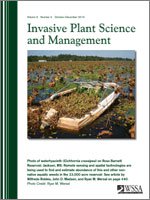The rapid progression of an invasive genotype of common reed along roads and other linear infrastructures in North America provides one of the most spectacular examples of the role of transportation corridors as invasion pathways. In this paper, we discuss ecological patterns and processes in roadside habitats important for understanding the invasion dynamics of common reed from coastal areas inland. Frequent disturbances in roadsides combined with potentially high levels of nutrients from adjacent land and stress conditions (from deicing salt and other pollutants) mimic the conditions unfortunately found more and more in natural wetlands. The novel contribution of roads is the creation of linear wetlands with an unprecedented level of connectivity. Genetic evidence shows that invasion inland coincides with the intensification of the road network. Time series analysis of remote sensing data reveals impressive rates of invasion of roadsides and other linear infrastructures, suggesting prime conditions for common reed in these novel habitats. Whereas reed dispersal along roads was thought to be largely due to rhizome transport, new evidence suggests a significant contribution of sexual reproduction and seedling establishment, likely enhanced by climate warming at northern latitudes. There is little evidence that other wetland plants can slow down vegetative expansion of common reed in roadside habitats, but plant cover could prevent seedling establishment and shading by shrubs and trees limit lateral clonal expansion. The fact that common reed possibly provides water treatment and other ecosystem services in roadsides must be carefully weighed against the threat to biodiversity in natural systems. All this begs for investigating urgently if, where, and how we should intervene without compromising the great value of wetlands of conservation interest intersected by roads.
Nomenclature: Common reed, Phragmites australis (Cav.) Trin. ex Steud





